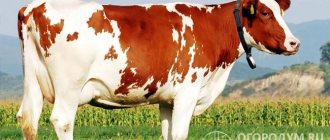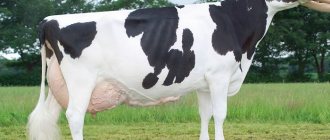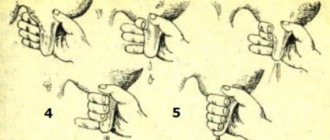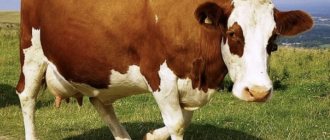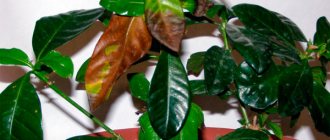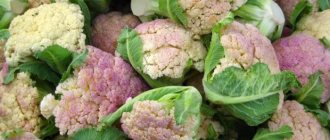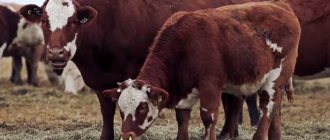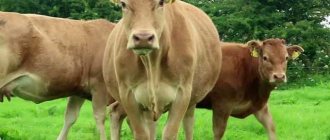The digestive system of cattle is quite complex. Those people who are not involved in agricultural affairs have no idea what the digestive system of cows should be like. It is quite voluminous, since the body regularly has to process huge portions of food. Large portions of feed are needed to ensure that milk products are produced in sufficient quantities. You should also take into account the quality of food that enters the digestive tract. Typically the feed is roughage. Accordingly, the organs need a large amount of time for the feed to be completely broken down and processed by the body.
General information
The structure of the stomach of ruminant animals is quite peculiar. Each section of the stomach performs its own functions. The cow usually does not bother much with chewing food, only slightly grinding the food she eats. The bulk of food is processed in the rumen, where it turns into fine mush.
Food enters the stomach progressively, it passes through the rumen, then into the mesh, then into the book and into the abomasum. The purpose of the mesh is to filter liquid processed feed. The calf's digestive system is unsuited to processing roughage. Therefore, the groove dividing the scar has the shape of a tube. It carries milk from the esophagus to the abomasum.
It is important to introduce roughage into the diet of young animals no earlier than a month after birth. Otherwise, the abomasum will not be able to process such food, and the forestomach at this age is not yet involved in processing.
In total, the stomach of cows consists of four main sections. This organ is voluminous; it is located throughout the central part of the abdominal cavity. Its anterior part is connected to the esophagus, and its posterior part is connected to the duodenum. The digestive system of large horned animals contains several sections that differ in their functions. These are the oral cavity, pharynx, esophagus and stomach.
The key purpose of the mouth is to eat grass, so it only contains the front row of lower molars. Every day, up to 200 liters of salivary fluid are secreted in the oral cavity.
The entire digestive tract of ruminant animals consists of the oral cavity, pharynx, digestive tract and stomach. In total, cows have four main chambers in the stomach, each of which is characterized by its own functions and specific anatomical structure. The animal has one stomach, and there are four sections in it. The proventriculus contains a scar, a mesh and a book. The abomasum is considered separately from the forestomach.
The volumes of the stomach are usually very large; each chamber performs certain functions in processing and absorbing incoming feed. After entering the stomach, the mass initially penetrates into the rumen cavity, where it is processed and returned for repeated chewing. After which it returns again to the cavity of the scar, and then to the book and other sections. In each department, food is processed in stages; as a result, the processed mass enters the booklet in crushed form. And in the book, liquid and nutrients are already absorbed by its walls.
The importance of diet and feeding regimen
Any disturbances in cattle nutrition lead to serious and undesirable consequences: loss of productivity, disease.
Diseases that result from improper feeding of cows:
Diseases that result from improper feeding of cows:
- Hypotension and atony of the forestomach - monotonous food; the complication is infectious, against the background of an injured mucous membrane;
- Rumen acidosis - excessive content of corn, barley, oats, wheat and other soluble carbohydrates in feed;
- Rumen alkalosis: the cause is a violation of the pH level associated with an excess of protein (over 20%), synthetic nitrogenous substances in concentrates, and a general lack of carbohydrates;
- Scar parakeratosis – hardening of the papillae; the reason is an excess of the norm of concentrates while reducing roughage;
- Rumen overflow, rumen paresis - overflow with food, transition to pasture feeding; poisoning with pesticides, chemicals;
- Rumen tympany - bloating due to overeating of feed, causing increased gas formation, blockage of the esophagus, poisoning, including gases released during fermentation in the rumen; the course of the disease is rapid and requires immediate assistance;
- Reticulitis – injury to the mesh by sharp objects falling with food;
- Blockage (clogging of the book) more often occurs in regions with dry grass and insufficient water supply; it can be caused by clogging of roughage with sand, soil, with an increased content of mixed feed and a shortage of liquid, succulent feed;
- Inflammation of the abomasum: calves get sick when there is a deficiency of protein, vitamins and minerals; in adult animals, inflammation of the mucous wall is caused by poor-quality food (mold, rot, frozen and sour root vegetables), monotonous feeding, a sharp transition to a new regime and diet; the disease is dangerous due to secondary manifestations of negative microflora;
- Displacement of the abomasum occurs due to pregnancy, but can be caused by the accumulation of gases, constipation, and intestinal obstruction; a decrease in acidity develops for the second time, inhibition of protein reactions occurs, rotting in the abomasum and other organs, and general intoxication (poisoning).
Be sure to read:
Milking machine for cows at home, operating principle of AID-2, instructions
Each of the listed diseases is the result of ignorance of the cow’s stomach, the structural features and functions of all departments, as well as disturbances in the feeding of ruminant herbivores.
Therefore, special attention is paid to feeding the cows, and the diet can be, for example, like this:
It is important that the diet of cattle corresponds to the age, productive direction, and conditions of keeping the animals.
Features of the structure and function of the scar
The rumen in cows is the largest chamber of the stomach, which performs many digestive functions. This chamber is located on the left side of the animal's abdominal cavity. Roughage does not affect the thick walls of this section. Every minute they contract, as a result the food eaten is mixed, and enzymatic substances in this section evenly distribute the food for processing. In the same section, grinding of hard stems occurs. The key functions of the rumen are:
- Enzymatic. Under the influence of microflora, the digestive system is launched, and the initial fermentation processes begin. In this department, active production of carbon dioxide and methane occurs, thanks to which the process of breaking down all food is carried out. If an animal does not regurgitate carbon dioxide, it becomes bloated and the functioning of other parts of the digestive system is disrupted.
- Mixing the feed. Under the influence of scar muscles, food is mixed and removed for repeated chewing. It is noteworthy that the walls of this section are rough, which allows maximum absorption of beneficial substances.
- Conversion of carbohydrates into lipid structures. Thanks to this function, the animal’s body is provided with energy reserves. This function is performed by specific microflora and enzymes - proteins, keto acids, bacteria.
The stomach of an adult can hold up to 145 kilograms of food. Almost two-thirds of food is processed by the rumen. This section contains a cranial, dorsal and ventral sac. Those who have seen a cow at least once could not help but notice how, after eating food, she regurgitates it back to chew it again. This process takes about seven hours per day.
Important! The food that is regurgitated by an animal is called cud. After the animal chews this mass again, it penetrates not into the cavity of the rumen, but into the next section called the book.
Treatment at home
You can use folk remedies to open up your stomach using warm water with infused yeast. Next, diluted alcohol and sugar are poured into the prepared container. The resulting composition must be at least 1 liter.
Once every 12 hours, a similar infusion is poured down the throat of a cow for several days. Tympany or bloating of the stomach can occur due to improper feeding.
It is necessary to distinguish between bloating and blockage, as they require completely different approaches to treatment. If the organ has become bloated, you should not hesitate. It is necessary to stop fermentation processes as soon as possible and restore peristalsis, and also be sure to remove accumulated gases from the rumen and organ mesh.
After calving, cows may have problems with stool and fermentation processes in the body. Supervision by a specialist is necessary in order to monitor the process and provide timely assistance if the stomach becomes upset.
Features of the structure and function of the mesh
Another section in the stomach of a ruminant animal is the mesh. This chamber is the smallest in size, its volume usually does not exceed 10 liters. The appearance of this section resembles a sieve; large stems are retained here, since when roughage enters other sections of the stomach, it negatively affects their walls.
After the cow chews the grass, this mass enters the cavity of the rumen, then this mass is regurgitated, the animal chews it again, then it enters the cavity of the mesh. If the grass is not thoroughly chewed, large stems can be stored in a net for up to two days. There, this food is decomposed and returned to the rumen for further regurgitation and repeated chewing. Only after this does the mass enter the next section called the book.
The mesh performs a special function - under its influence, large pieces of food are separated from small ones. With the help of a mesh, large pieces are returned back to the rumen cavity for processing. There are no glands in this chamber. Its walls are rough, it consists of small honeycombs, which determine the quality of food processing by the previous section - the rumen. The mesh is connected to other chambers through a special esophageal groove. Only well-processed food can be included in the book.
Description of the digestive system
First, let's understand the physiology of digestion. It is a process consisting of reactions that occur in the digestive tract. They break down foods into their simplest elements, which are distributed throughout the body and enter the blood. As a result, the cow receives all the necessary vitamins and minerals, grows and produces healthy milk.
Burenki are ruminants, so their stomach contains a large number of microorganisms. They get along well with each other and can benefit from it.
Thus, the conditions in which a cow lives have a positive effect on the nutrition and reproduction of microorganisms. They, in turn, help digest food. A similar process is impossible in animals with a single-chamber stomach.
Bacteria do part of their work in the forestomach. Subsequent processes are practically no different from those that occur in single-chamber stomachs. Microbes contribute to the processing of both grass feed and grain.
Features of the structure and functions of the book
The book is a small chamber that holds about 5% of the food consumed. No more than 18-20 liters of food can be placed inside it. In this department, repeatedly chewed feed is processed under the influence of specific microflora and a high concentration of enzymatic substances.
This camera looks like a book, hence its name. It looks like continuous folds, divided into narrow sections. The food that comes here is located in these folds. In this department, the food mass is processed through salivary fluid, then fermentation processes begin. The processed feed begins to be evenly distributed among the folds, after which dehydration occurs. Moisture is absorbed through the mesh structure of the chamber.
This section of the digestive tract plays a very important role in food processing processes - food is absorbed in it. This compartment itself is quite voluminous, but it holds a small amount of food. It absorbs moisture and mineral components. This chamber is a kind of filter and chopper of large roughage, in which water is absorbed. It is located in the area of the right hypochondrium, connected to the mesh and abomasum. Between the abomasum and the book there is also a connection with the duodenum.
Representatives of cattle chew food twice, since tough plants contain a large amount of fiber, its processing is a complex and lengthy process, this is a huge burden on the stomach, so to facilitate processing it is necessary to chew it twice. This way the load will be minimal.
Why do some people think that a cow has four stomachs?
In many ways, the knowledge of a rural resident who has not excelled in educational sciences is limited and depends on his personal experience.
And rural residents have more experience in slaughtering livestock for meat than any city dweller.
The stomach of a cow, like that of other cattle, is structured in a very unique way. the digestive system of these animals generally work We will answer these and a number of related other questions below in this article.
Each section of the stomach has its own functions.
We will also focus on them. After slaughtering cattle, you can see with your own eyes that answering the question of the number of stomachs is quite difficult, since four different sections are clearly visible. This puts a person at a dead end.
If, after what you have seen, you tell a city person that the villagers know better and have seen four stomachs with their own eyes, then the city dweller will not have any questions or doubts.
How many stomachs does a cow have - one or more? Of course, there is one, but it has a four-chamber structure. The first three chambers are the rumen, and the mesh and book are the forestomach. Abomasum is the fourth chamber in the structure of the cow's stomach.
A school biology course, if it is not related to a person’s professional activity, does not linger in the mind for a long time. This is why people may believe in four stomachs and get confused about the information on this topic.
Features of the structure and function of abomasum
The last chamber in the cow's digestive system is the abomasum. In its structure it resembles the stomach of other mammals. It contains a large number of glands that produce hydrochloric acid.
There are peculiar oblong rings that form muscle tissue. The inner walls are enveloped in a special type of secretion, which consists of epithelial tissue, pyloric and cardiac glands. The surface of the mucous membrane is formed from multiple oblong folds. The key function of the stomach is carried out in this chamber.
The capacity of this compartment is about 14-15 liters. It prepares the feed for the final stage of processing. The book absorbs moisture and nutritional components from food; this mass enters the abomasum in a slightly dried form.
Cow stomach - structure, description
If you take a close look at the digestive system of a cow in the drawings of the anatomical structure of the animal, surprise is inevitable. After all, there really are four stomachs! But this is a misconception. The answer from experts is clear - there is one stomach, and the distinguishable “chambers” are its departments. Each of the four has a name:
- abomasum;
- book;
- scar;
- net.
A new question arises. What are they needed for? The structure of a cow's stomach is different from that of, for example, carnivorous animals or mammals that eat mixed feed. Nature has endowed the cow with an ideal digestive organ that allows almost 100% of plant foods to be absorbed. This is especially important for producing delicious, nutritious milk.
Causes of stomach problems
Most often, dysfunctions of the digestive system in animals occur due to improper feeding or housing conditions. When consuming low-quality food, intestinal motility slows down or completely stops. If the stomach is not working, common symptoms are:
- loss of appetite;
- cough;
- dyspnea.
Important! One of the common causes of the disorder is the consumption of too large food particles. Compound feed in briquettes, corn cobs and root vegetables must be pre-processed. Large food or too rough food will not be able to grind in the rumen, this will cause the stomach to stop.
Another reason for stomach failure is prolonged lack of food. If a cow is not fed for a long time, and then given too large a portion of food, she will begin to greedily absorb it, not chewing, but swallowing. In this case, the muscular apparatus of the rumen will not be able to process large particles of food; a plug is formed in the groove, which is the connecting link between the rumen and the mesh.
Let's look at other causes of stomach problems:
- Presence of foreign objects. The cow eats everything that is offered to her. She will never feel the feeder with her lips, as horses do. They eat all the food without sorting it out or sorting through it. As a result, stones, nails and other objects enter the esophagus. These items can cause not only dysfunction of the stomach, but also a breakthrough in any part of the stomach or intestines.
- Spasms in the digestive tract. Intense stress or sudden fear can provoke a spasm. In this case, a strong narrowing of the muscular walls of the digestive tract occurs, as a result peristalsis stops.
- Consumption of low-quality food. If an animal is given rotten or rough food, fermented or moldy grass, expired feed, pathogenic microflora multiply in the stomach, the amount of gases in the intestines increases, rumen tympany develops, and the stomach stops.
Common pathologies
A clear symptom of the presence of pathologies is the animal stopping chewing cud. Digestive problems are caused by:
- low-quality feed;
- eating disorders;
- unfavorable living conditions for the animal.
Bloating
The medical term for this phenomenon is tympany. It is a dangerous condition and is characterized by intense gas formation. Occurs due to:
- changing the cow's diet;
- grazing it in wet meadows;
- the presence of legumes in the feed;
- blockage of the esophagus.
Symptoms of tympany are:
- Absence of the ruminant reflex.
- Refusal of food.
- Distended peritoneum.
- Anxious, restless state of the animal.
- Frequent pulse.
- Dyspnea.
- Pale mucous membranes.
This condition is life-threatening for cattle. The swollen scar compresses the diaphragm, the animal cannot breathe fully and dies from lack of oxygen.
Providing assistance to cattle in this condition depends on the cause of tympany.
- If there is a blockage in the esophagus, it is necessary to push through the stuck food. This action must be performed using a flexible and thin probe. It is better to entrust this to a veterinarian. You can help by massaging the area of the hungry pit or cooling it with cold water. They give a fist massage. The cow should not be allowed to lie down - it must be in constant motion.
- With increased gas formation, medications will help: Timpanol, magnesia, activated carbon.
- If other methods have not helped the animal, the veterinarian punctures the abdominal wall and perforates the scar.
Stopping digestion
An incorrectly formulated diet for a cow, a violation of the feeding regime, an abundance of concentrated feed, the animal eating rotted hay, and blockage of the esophagus most often cause digestion to stop.
The symptoms are:
- Lethargy.
- Apathy.
- Lack of ruminant reflexes.
- Loss of appetite.
- Absence of contractions in the area of the hungry fossa.
As a therapy, cattle are left completely without food for a day . Then carefully introduce into the diet:
- silage;
- fresh hay;
- quality root vegetables.
You can get your stomach working by using:
- Gastric lavage.
- Saline solution as a drink.
- Scar massage.
Injury
Due to the cow's ability to grab and swallow food without chewing it, there is a danger of the animal swallowing foreign objects. It can be:
- nails;
- wire;
- fragments.
They cause damage to the walls of the stomach and intestines or get stuck in them. If a foreign object causes a through injury to the wall of the stomach, then the following are at risk:
- heart;
- liver;
- spleen.
The symptoms are pronounced and include:
- Lack of appetite.
- Animal anxiety.
- When swallowing, the neck is pulled forward.
- Unnatural posture of the cow, appearance of a hump.
- Blood in stool.
- Fever.
- Pain when touching the sternum.
To provide assistance, a magnetic probe is used or the object is removed surgically. But, given the specifics and high cost of these methods, in most cases the animal is sent for slaughter.
Book jam
This digestive pathology is caused by the predominance in the cow’s diet of:
- dry food;
- bran;
- grain waste.
The presence of sand and dirt in the stern is also a cause of blockage . The symptoms of the disease completely coincide with the symptoms of gastric arrest. To find out the exact cause, the stomach is punctured with a sharp needle. When it penetrates heavily into the stomach area, it becomes clear that the animal has a blockage.
For treatment, lavage of all parts of the stomach with a 10% sodium solution is used. Either sodium chloride or sodium sulfate can be used. After rinsing, digestion is started in the same way as when stopped.
Each chamber of a cow's stomach performs its own function. When even one department stops, the entire digestion of the animal suffers. The use of high-quality feed for food, diet and favorable conditions for cattle will help raise a healthy livestock population.
Processes in the chambers of the stomach
The rumen of an adult animal can hold about 190 liters of product. This is the largest section of the stomach, comprising about 80% of its volume. The mesh can hold about 10 liters. It is called so because its inner shell is similar to a honeycomb, in which foreign particles trapped in the proventriculus are retained.
In the rumen, food undergoes hydration and filtration. The walls of the organ contract continuously, so the food is constantly moving. If the digestion process proceeds correctly, then the food is in the chamber in layers. Below all are the fine particles, which have the heaviest weight. A little higher in the rumen juice there is light roughage, and above it are the formed gases.
Every minute, vibrations occur in the organ, during which the lower mass of food rises and ends up in the rumen juice. Thus, the processes inside the rumen allow the uninterrupted filtering of light food through roughage and juice, due to which the feed quickly breaks down into many elements.
For successful digestion, cows need to be given roughage. For example, high-quality hay or silage. This production filters other food into the rumen and also supports its movement as it causes the organ to contract.
What role does the liver play?
One of the main digestive organs of cows is the liver. It performs the most important mission - it forms glucose. Digestive products enter the liver, where they undergo thorough processing. Here, the work products of microbes that are in the large intestine are neutralized, as well as all kinds of medicinal formations and protein breakdown products.
In addition, bile enters the intestines from the liver, which plays a huge role in the digestion process. It is thanks to this substance that fats are digested and absorbed into the body.
Bile also enhances the work of the elements of pancreatic juice, which has a positive effect on the processing of feed mass. The substance appears in the duodenum 10 minutes after eating. The secretion of bile lasts several hours and is completed only after the last part of the feed has been processed in the stomach and comes out of it.
Net
The second section of the cow's stomach after the rumen is the mesh. The smallest compartment, the volume of food that fits in it is no more than 10 liters. The mesh is necessary in order to retain large blades of grass and stems that are poorly chewed by the cow during the rumination process. After a few days, the rough parts of the food decompose and are again subjected to the process of thorough chewing.
The main functional feature of the mesh is the “sifting” of large particles from small ones. Excessively large pieces are returned for reprocessing. This section of the stomach does not have glandular cells. The bases of the walls are peculiar cells and a solid gutter connecting the mesh with neighboring sections.
Section of the stomach of ruminants
The cow's digestive system consists of several sections that differ in function, namely:
- oral cavity;
- pharynx;
- esophagus;
- stomach.
The mouth of these animals is especially interesting, since its main purpose is to pluck grass, hence the presence of exclusively the front row of lower teeth. The volume of saliva released every day
is impressive Enzymatic gases accumulate in the esophagus. We also recommend reading:
The largest bulls with officially recorded parameters Cows are capable of being friends Genetics have bred hornless dairy bulls Serenade for a cow
How many stomachs does a cow have? One, two, three or even four? This will cause surprise, but there is only one, but consisting of four departments. The first and largest compartment is the scar, and the proventriculus contains a mesh and a book. No less interesting and not entirely euphonious is the name of the fourth chamber of the stomach - abomasum. The entire digestive system of the cow requires detailed consideration. Learn more about each department.
Scar
The cow's rumen is the largest chamber and performs a number of very important digestive functions.
Thick-walled tripe is not affected by rough food. Every minute contraction of the rumen walls ensures the mixing of the eaten grass , subsequently the enzymes distribute them evenly. Here, in addition, hard stems are crushed. What is a scar used for? Let us outline its main functions:
- enzymatic - intracellular bacteria launch the digestive system, thereby ensuring the initial fermentation process. The rumen actively produces carbon dioxide and methane, with the help of which all food entering the organ is broken down. If carbon dioxide is not regurgitated, the animal’s stomach swells, and as a result, the functioning of other organs malfunctions;
- function of mixing food - scar muscles contribute to mixing food and its further release for repeated chewing. Interestingly, the walls of the rumen are not smooth, but with small formations resembling warts, which facilitate the absorption of nutrients;
- transformation function - more than one hundred billion microorganisms present in the rumen contribute to the conversion of carbohydrates into fatty acids, which provides energy to the animal. Microorganisms are divided into bacteria and fungi. Protein and ammonia keto acids are converted thanks to these bacteria.
A cow's stomach can hold up to 150 kg of feed, a huge proportion of which is digested in the rumen. Up to 70 percent of the food eaten is found here. There are several bags in the rumen:
- cranial;
- dorsal;
- ventral.
Probably, each of us has noticed that a cow, some time after eating food, regurgitates it back to chew it again. A cow spends more than 7 hours every day on this process! repeatedly regurgitated mass is called chewing gum. This mass is thoroughly chewed by the cow, and then ends up not in the rumen, but in another section - in the book. The rumen is located in the left half of the abdominal cavity of the ruminant.
Net
The next section in the cow's stomach is the mesh. This is the smallest compartment, with a volume not exceeding 10 liters. The mesh is like a sieve that stops large stems, since in other sections coarse food will immediately cause harm. Imagine: a cow chewed grass for the first time, then food got into the rumen, belched, chewed again , and ended up in the net.
If the cow has not chewed thoroughly and left behind large stems, they will be stored in a net for one to two days. What is it for? The food is decomposed and again offered to the cow for chewing. And only then does the food go into another section - the book. The mesh has a special function - it separates large pieces of food from small ones. Thanks to the mesh, large pieces are returned back to the rumen for further processing. There are no glands in the mesh. Like a rumen, the mesh walls are covered with small structures. The mesh consists of small cells that determine the level of food processing by the previous chamber, that is, the rumen. There are no glands in the mesh. How is the mesh connected to other sections - the scar and the book? Very simple. There is an esophageal groove, shaped like a semi-closed tube. Simply put, the net sorts food. Only sufficiently crushed food can get into the book.
Book
The book is a small compartment that holds no more than 5 percent of the food consumed. The capacity of the book is about 20 liters. Only here the food repeatedly chewed by the cow is processed. This process is ensured by the presence of numerous bacteria and potent enzymes.
It is no coincidence that the third section of the stomach is called a book, which is due to the appearance of the section - continuous folds, divided into narrow chambers. Food is located in folds. The cow’s digestive tract does not end there - the incoming saliva processes the food, and fermentation begins. How is food digested in a book? The feed is distributed into folds and subsequently dehydrated. Moisture absorption is carried out due to the peculiarities of the mesh structure of the book.
The book performs an important function in the entire digestion - it absorbs food. itself is quite voluminous , but it holds a small amount of food. The book absorbs all moisture and mineral components. What is the book like? An elongated bag with numerous folds.
The book is like a filter and chopper of large stems. In addition, water is absorbed here. This department is located in the right hypochondrium. It is connected to both the mesh and the abomasum, that is, it continues the mesh, passing into the abomasum. The membrane of the third section of the stomach forms folds with small nipples at the ends. The abomasum is elongated in shape and resembles a pear, which is thickened at the base. Where the abomasum and book connect, one end connects to the duodenum.
Why does a cow chew her food twice? It's all about the fiber contained in plants. It is difficult and time-consuming to process, which is why double chewing is necessary. Otherwise the effect will be minimal.
Abomasum
The last section of the cow's stomach is the abomasum, which is similar in structure to the stomachs of other mammals.
A large number of glands and constantly secreted gastric juice are features of abomasum. Longitudinal rings in the abomasum form muscular tissue . The walls of the abomasum are covered with a special mucus, consisting of their epithelium, containing the pyloric and cardiac glands. The mucous membrane of the abomasum is formed from numerous elongated folds. The main digestive processes take place here.
Huge functions are assigned to the abomasum. Its capacity is about 15 liters. Here the food is prepared for final digestion. The book absorbs all the moisture from the food, therefore, it enters the rennet in a dried form.
Let's sum it up
Thus, the structure of the cow’s stomach is very unique, since the cow does not have 4 stomachs, but a four-chamber stomach, which ensures the processes of the cow’s digestive system. The first three chambers are an intermediate point, preparing and fermenting the incoming feed, and only the rennet contains pancreatic juice , which completely processes the food. The cow's digestive system includes rumen, mesh, book and abomasum. The enzymatic filling of the rumen ensures the process of breaking down food. The structure of this compartment resembles a similar human organ. The rumen of cattle is very capacious - 100 - 300 liters; that of goats and sheep is much smaller - only 10 - 25 liters.
Long-term retention of food in the rumen ensures its further processing and decomposition.
First, fiber undergoes breakdown, and a huge number of microorganisms .
Microorganisms change depending on the food, so there should not be a sharp transition from one type of food to another. Fiber is very important for the ruminant’s body as a whole, as it ensures good motility of the pregastric sections. Motility, in turn, ensures the passage of food through the gastrointestinal tract. In the rumen, the process of fermentation of feed masses occurs, the mass is broken down, and the body of the ruminant animal absorbs starch and sugar. Also in this section, protein is broken down and non-protein nitrogen compounds are produced.
The acidity of the environment in the abomasum is provided by numerous glands located on the walls of the abomasum. The food here is broken down into tiny particles, then the nutritional elements are completely absorbed by the body, the finished mass moves into the intestines, where the most intense absorption of all useful microelements occurs. Imagine: a cow eats a bunch of grass in the pasture, and the digestion process begins, which ultimately takes from 48 to 72 hours.
The digestive system of cows is very complex. These animals must eat continuously, as a break will cause big problems and will have a very negative impact on the cow's health. The complex structure of the digestive system has negative qualities - indigestion is a common cause of death in cows. Does a cow have 4 stomachs? No, just one, and the entire digestive system includes the oral cavity, pharynx, cow's esophagus and stomach.
Calf stomach
The first rumination is observed in 20-day-old calves. To stimulate the development of the proventriculus, starting from the age of four days, they should be fed a feed mixture consisting of concentrates with a small admixture of roughage. When drinking milk, the entrances to the proventriculus, which are beginning to form, reflexively close, and the liquid enters the abomasum through the esophageal gutter. Roughage should not be given from ten days of age, as recommended by old reference books. It is necessary to teach children to consume a fully mixed diet. From the age of one month, young animals are accustomed to hay, and from the age of nine weeks - to haylage and silage. By the age of six months, the cub becomes a ruminant.


